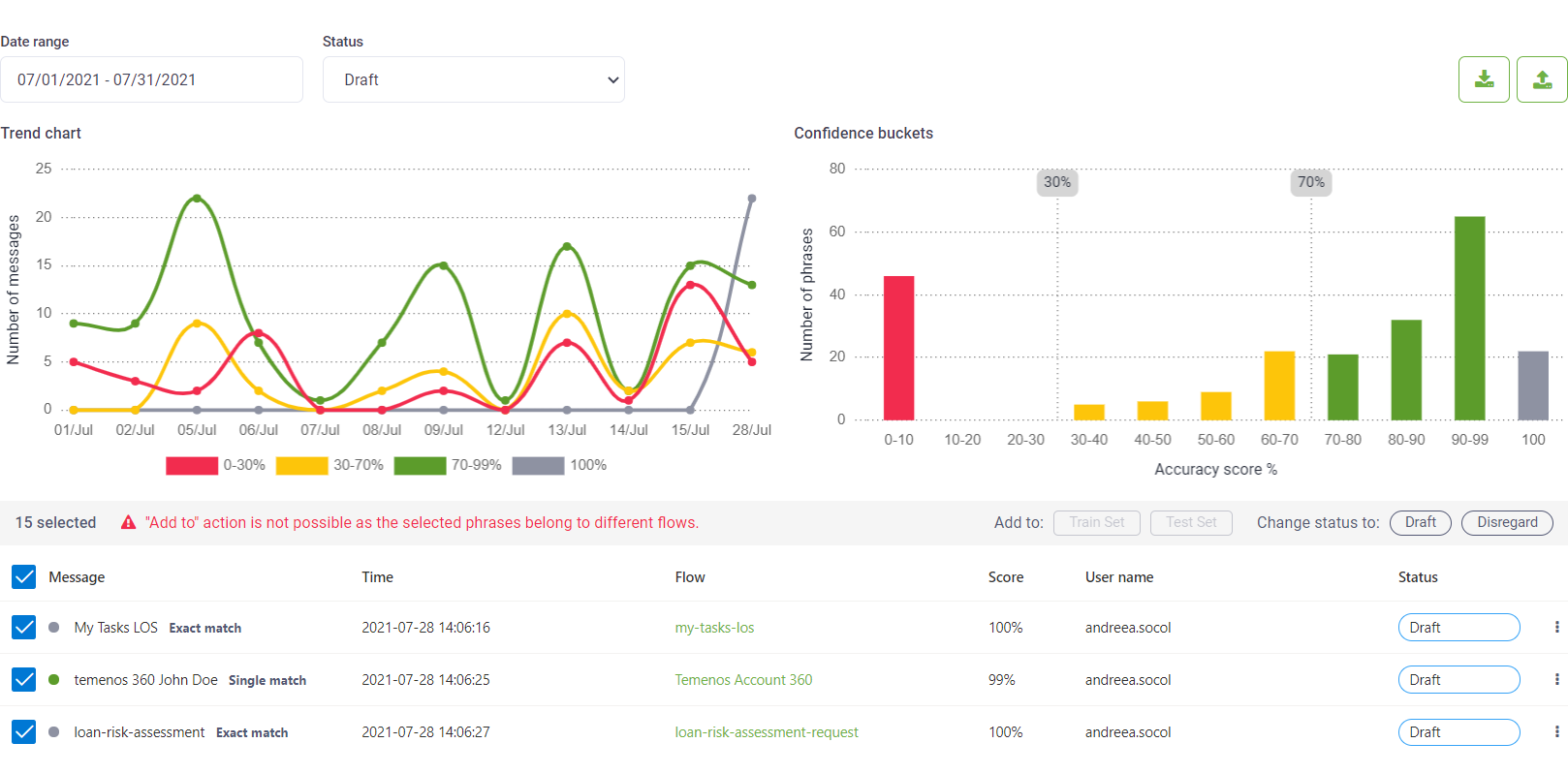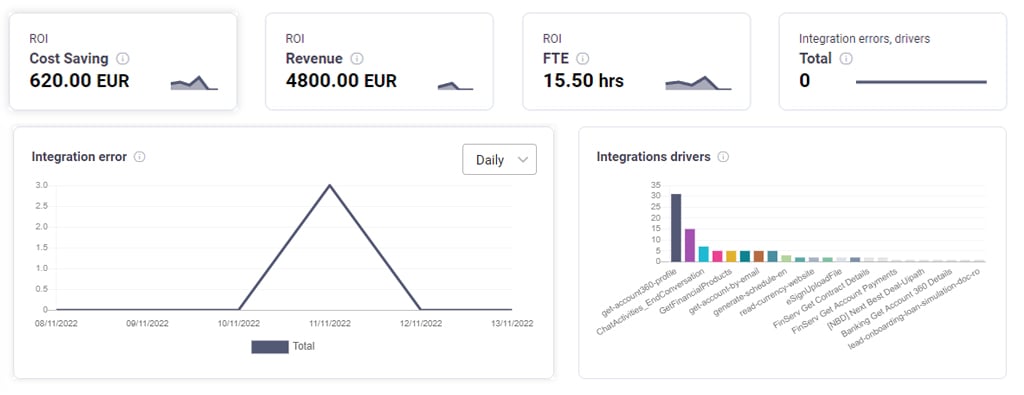It’s never easy for an enterprise to adopt new technology, and conversational AI is no different. But the technology offers excellent potential ROI. Like, for example...
- Conversational AI assistants can interact with thousands of users simultaneously, 24 hours a day. This translates into many hours saved for customer service employees.
- Virtual AI assistants can offer “just-in-time” communication, stepping in at opportune moments to provide the information and prompts that customers need to make a purchasing decision.
- Through integration with RPA, conversational AI assistants can also handle repetitive internal tasks, such as back-office business functions, freeing up employees’ time in multiple departments, from Accounting to HR.
By following a few best practices in implementation, you can maximize the ROI of conversational AI.
Ensure Access to High-Quality Data
What’s the “secret sauce” of conversational AI? A machine can process data much more quickly than a human. This means a conversational AI assistant can act more proactively than a human, potentially anticipating why a customer has initiated an interaction. But that capability is only as valuable as the data it relies on.
Thus, the first step to successfully implementing conversational AI is to ensure that your virtual assistant will have access to updated, high-quality data. That data might come from a variety of existing sources, including the website, CRMs, internal knowledge bases, or ERP systems. Generally speaking, modeling your data as knowledge graphs is a great way to ensure that it’s complete and well-structured.
Before you start any implementation, take time to evaluate the state of your data. Then make sure your virtual AI assistant has been configured to access the data through APIs, ODBC, or even RPA bots. This step will help your virtual assistant to learn more efficiently, improving ROI.
Choose the Right Candidates for Automation
Implementing virtual assistant's as a “first line of defense” for any interaction can be tempting, but this approach isn’t usually the right one; some interactions lend themselves to automation better than others. As you consider which processes to automate, consider two key factors first:
- Complexity: Does an interaction require creative thinking or complicated communication? The simpler the interaction, the easier it is to automate.
- Volume: How often does this kind of interaction occur? A primary driver of ROI is a reduced workload for human employees, so it’s usually best to focus first on repetitive work that consumes the most time for your teams.
Given these two criteria, the best candidates for conversational AI are interactions with high volume and relatively low complexity. These might include simple customer questions about account status and payment schedules or repetitive processes like booking services or onboarding customers. Starting with these interactions gives your conversational AI assistant ample chance to learn, and it can also instantly reduce your employees’ workload--providing immediate ROI.
Next, move forward by automating interactions with moderate complexity or lower volume. These might impact ROI less dramatically, but they help your conversation AI assistant continue to learn.

Thanks to technology like NLU (Natural Language Understanding) and NER (Named Entity Recognition), conversational AI is now more sophisticated than ever. This means it can handle more complex interactions that require an understanding of tone and context or the ability to navigate multi-step processes. Automating these interactions makes much more sense if they also occur at a high volume.
What shouldn’t be automated? Highly complex interactions occur infrequently. These can require significant resources in the virtual assistant configuration, offsetting potential time savings. Usually, this category of interactions is best left to humans.
Decide How Handoffs Will Work
Conversational AI aims to give users an experience that equals or surpasses what they would experience with a human user. Sometimes, a virtual AI assistant might not be able to deliver that experience. This could be because a request is too complex or because the AI hasn’t learned how to navigate that interaction.
In either case, it’s important to think through this handoff from a conversational AI assistant to a human agent before implementation begins. One best practice is always offering users the option to interact with a human operator when the virtual assistant cannot provide the answer. This ensures that users get the experience they are most comfortable with. Other triggers for a handoff might include the following:
- Complexity: If the complexity of the interaction exceeds the scope of the conversational AI assistant, the bot should be able to recognize this and invite the user to talk with a human.
- Urgency: An intelligent virtual assistant should be able to recognize words and phrases that indicate an urgent issue. For example, if a water company’s customer says “broken water main,” that could be an emergency that requires immediate attention from a human.
- Negative sentiment: Conversational AI can use sentiment analysis to guess when a user feels frustrated or angry. This would be a cue to automatically suggest the transfer to a human agent.
Additionally, there may be instances where some human oversight is still desirable, but the virtual AI assistant can still do most of the work. For instance, if the conversational AI assistant is helping a user with complicated troubleshooting, a human might have to approve the bot’s suggestions before they are sent to the user. This configuration might be preferable for highly technical interactions.
Choose the Right Metrics to Measure Success
How do you know if your AI virtual assistant is a success? First and foremost, it’s whether people get the right answers from the AI assistant, making accuracy rate one of the critical metrics. That is why the conversational AI solution needs to provide ways to analyze both AI virtual assistant performance and NLP model performance through analytics dashboards and language model evaluation tools. Here's an example of one of the tools available in the DRUID Platform that allows conversational AI developers to enhance the virtual AI assistant's performance.

Other accuracy-related criteria to consider might be how many intents (what the user wants to achieve, like changing a password or finding out the status of their order) the virtual assistant can respond to and how many training phrases are configured per intent. Generally speaking, virtual AI assistants with more conversation flows and training phrases per intent will provide a superior user experience.
It’s also essential to think about core metrics. Regardless of industry, it’s worthwhile to measure engagement rate, total and active users, total conversations, fallback rate (rate of intents not recognized), and the top triggered flows and the intents the bot failed to understand. Additional core metrics might vary depending on the purpose of the project. For example, lead capture or conversion rate might be important for a conversational AI assistant whose primary function is marketing. However, a resolution rate might be more useful for customer service bots.

Select the Right Platform
Not all conversational AI technologies are created equal. Look for solutions that offer the right features for your business:
- Scalability: As a business grows, its technology must keep up. Search for a conversational AI solution that uses an enterprise multi-tenant platform, which allows for thousands of bots to be deployed at the same time.
- Customization: Every industry is a little different; a retail business might seek a more interactive customer experience and automated product suggestions, while a healthcare organization needs to maintain HIPAA compliance. Choose a provider that allows you to tailor the solution to your specific needs, from use cases to regulatory requirements.
- Data security and deployment models: Financial institutions might need on-premise data to meet government regulations. Other businesses might opt for a cloud or hybrid model. Your conversational AI provider should be able to offer different data security options that work for your business.
- Integration capabilities: Look for a system that seamlessly integrates with any internal or third-party applications to collect and update data from anywhere. This will help you consistently surpass customer expectations by providing personalized, relevant interactions.
Ready to learn more about how our platform can benefit your business?

